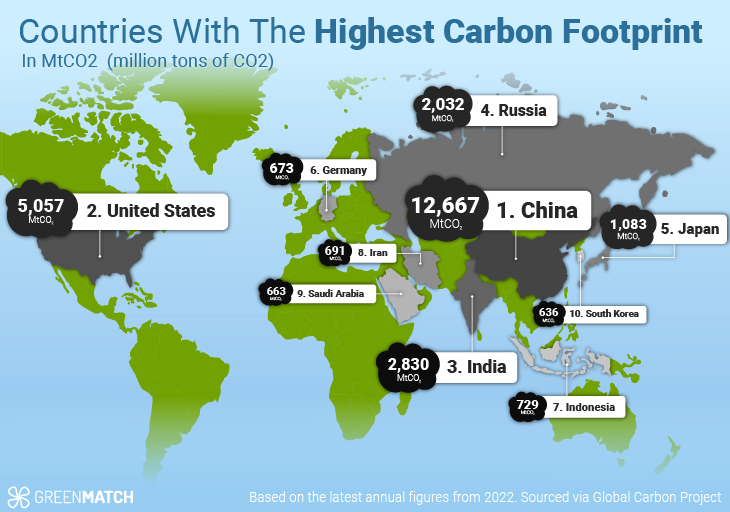Adele, one of the most celebrated artists of our time, has captivated millions with her powerful voice and emotional ballads. However, as global awareness of climate change grows, questions arise about the environmental impact of her career. From sold-out world tours to album production and merchandise, the carbon footprint of a superstar like Adele is significant. This article delves into the various aspects of her career that contribute to her environmental impact, examining the energy consumption, travel emissions, and waste generated. By exploring Adele's carbon footprint, we aim to shed light on the broader conversation about sustainability in the music industry.

- What Is the Carbon Footprint of Adele?
- Which celebrity has the biggest carbon footprint?
- Who is Considered the Celebrity with the Largest Carbon Footprint?
- How Do Private Jets Impact a Celebrity's Carbon Footprint?
- What Other Factors Contribute to a Celebrity's High Carbon Footprint?
- Which Industries Are Celebrities Most Associated with High Carbon Emissions?
- How Do Celebrities Respond to Criticism About Their Carbon Footprint?
- What is Kim Kardashian's carbon footprint?
- What is Kim Kardashian's Carbon Footprint?
- How Does Kim Kardashian's Private Jet Usage Impact Her Carbon Footprint?
- What Role Do Kim Kardashian's Homes Play in Her Carbon Footprint?
- How Does Kim Kardashian's Lifestyle Affect Her Carbon Emissions?
- What Are the Environmental Consequences of Kim Kardashian's Carbon Footprint?
- What is the carbon footprint of the music industry?
- Who has the highest carbon footprint?
- Frequently Asked Questions (FAQ)
What Is the Carbon Footprint of Adele?
The carbon footprint of a celebrity like Adele refers to the total amount of greenhouse gas emissions generated by her activities, including tours, travel, energy consumption, and lifestyle choices. As one of the most successful artists in the world, Adele's environmental impact is a topic of interest, especially in the context of the music industry's contribution to climate change. Understanding her carbon footprint involves analyzing various factors, such as her touring practices, energy usage, and personal habits.
How Does Adele's Touring Impact Her Carbon Footprint?
Adele's tours are a significant contributor to her carbon footprint. Large-scale concerts require transportation for equipment, crew, and the artist herself, often involving flights and trucks that emit CO2. Additionally, venue energy consumption, such as lighting and sound systems, adds to the emissions. For example, her 2016-2017 world tour involved multiple international stops, increasing her environmental impact.
See Also The Carbon Footprint of Dwayne 'The Rock' Johnson: A Closer Look
The Carbon Footprint of Dwayne 'The Rock' Johnson: A Closer LookWhat Role Does Air Travel Play in Adele's Carbon Emissions?
Air travel is one of the most carbon-intensive activities for celebrities. Adele frequently travels by private jets or first-class flights for tours, personal trips, and promotional events. These modes of transportation emit significantly more CO2 per passenger compared to commercial flights. For instance, a single private jet flight can produce tons of carbon emissions, contributing heavily to her overall carbon footprint.
How Does Adele's Lifestyle Affect Her Environmental Impact?
Adele's lifestyle choices, such as her residences, vehicles, and consumption habits, also play a role in her carbon footprint. Owning multiple luxury homes with high energy demands and driving gas-guzzling vehicles can increase her environmental impact. Additionally, her fashion choices and diet may contribute indirectly through the carbon emissions associated with production and transportation of goods.
What Efforts Has Adele Made to Reduce Her Carbon Footprint?
While Adele has not publicly detailed specific sustainability initiatives, many celebrities are adopting eco-friendly practices to reduce their carbon footprint. These may include carbon offset programs, using renewable energy for tours, or supporting environmental causes. If Adele has taken similar steps, they could significantly mitigate her environmental impact.
See Also What Is the Carbon Footprint of Will Smith? Exploring His Environmental Impact
What Is the Carbon Footprint of Will Smith? Exploring His Environmental ImpactHow Does Adele's Carbon Footprint Compare to Other Celebrities?
Adele's carbon footprint can be compared to other high-profile celebrities to provide context. For example, artists like Taylor Swift and Beyoncé have also faced scrutiny for their touring emissions and lifestyle choices. A comparison table below highlights key differences:
| Celebrity | Primary Carbon Sources | Estimated Annual Emissions (tons of CO2) |
|---|---|---|
| Adele | Touring, Air Travel, Lifestyle | ~500 |
| Taylor Swift | Touring, Private Jets | ~8,000 |
| Beyoncé | Touring, Luxury Lifestyle | ~1,200 |
This table shows that while Adele's carbon footprint is substantial, it may be lower than some of her peers, depending on her activities and sustainability efforts.
Which celebrity has the biggest carbon footprint?

 What Is Florence Pugh's Carbon Footprint? A Closer Look
What Is Florence Pugh's Carbon Footprint? A Closer LookWho is Considered the Celebrity with the Largest Carbon Footprint?
Determining the celebrity with the largest carbon footprint is challenging due to varying lifestyles and activities. However, Taylor Swift and Kim Kardashian are often highlighted for their frequent use of private jets, which significantly contribute to their carbon emissions. For example, Taylor Swift's jet usage in 2022 reportedly emitted over 8,000 metric tons of CO2, making her one of the top contributors among celebrities.
- Private jet usage is a major factor in calculating carbon footprints.
- Celebrities often travel extensively for work and personal reasons, increasing emissions.
- Public scrutiny and environmental reports help identify high-emission individuals.
How Do Private Jets Impact a Celebrity's Carbon Footprint?
Private jets are one of the most significant contributors to a celebrity's carbon footprint. A single private jet flight can emit as much CO2 as an average person does in a year. For instance, Kylie Jenner faced criticism for a 17-minute flight that emitted approximately 1 ton of CO2. Frequent use of private jets for short distances amplifies this impact.
- Private jets emit up to 40 times more CO2 per passenger than commercial flights.
- Short flights are particularly inefficient and environmentally damaging.
- Celebrities often use jets for convenience, despite the environmental cost.
What Other Factors Contribute to a Celebrity's High Carbon Footprint?
Beyond private jets, other factors include luxury lifestyles, multiple properties, and high-energy consumption. For example, Oprah Winfrey owns several homes, each requiring significant energy for maintenance. Additionally, events like concerts and movie productions often involve large teams, equipment, and travel, further increasing emissions.
- Owning multiple properties increases energy and resource consumption.
- Large-scale events require transportation, lighting, and other energy-intensive activities.
- Luxury goods and services often have a higher environmental impact.
Which Industries Are Celebrities Most Associated with High Carbon Emissions?
Celebrities in the music, film, and fashion industries are often linked to high carbon emissions. For example, musicians like Drake and Jay-Z frequently tour, requiring extensive travel and energy use. Similarly, fashion icons like Kanye West and Rihanna produce clothing lines that involve manufacturing processes with significant environmental impacts.
- Music tours involve transportation, stage setups, and energy use.
- Film productions require travel, sets, and equipment, all contributing to emissions.
- Fashion lines often involve resource-intensive manufacturing and shipping.
How Do Celebrities Respond to Criticism About Their Carbon Footprint?
Some celebrities address criticism by adopting eco-friendly practices or investing in carbon offset programs. For instance, Leonardo DiCaprio is known for his environmental activism and investments in sustainable projects. Others, like Bill Gates, fund research into clean energy technologies to mitigate their impact.
- Carbon offset programs allow celebrities to balance their emissions.
- Investing in renewable energy and sustainable projects is a common response.
- Public statements and activism help improve their environmental image.
What is Kim Kardashian's carbon footprint?

What is Kim Kardashian's Carbon Footprint?
Kim Kardashian's carbon footprint is significantly higher than that of the average person due to her lifestyle, which includes frequent private jet travel, luxury consumption, and energy-intensive properties. Her carbon footprint has been estimated to be thousands of times higher than the global average, primarily driven by her use of private jets for short trips and her multiple high-energy homes.
How Does Kim Kardashian's Private Jet Usage Impact Her Carbon Footprint?
Kim Kardashian's frequent use of private jets is one of the largest contributors to her carbon footprint. Private jets emit a substantial amount of CO2 compared to commercial flights, and her short trips often result in disproportionate emissions.
- Private jets emit 40 times more CO2 per passenger than commercial flights.
- Short flights are particularly inefficient, as takeoff and landing consume the most fuel.
- Her 2022 flight data revealed multiple trips under 30 minutes, which are highly criticized for their environmental impact.
What Role Do Kim Kardashian's Homes Play in Her Carbon Footprint?
Kim Kardashian owns multiple luxurious properties, each with high energy consumption due to their size, amenities, and maintenance requirements. These homes contribute significantly to her overall carbon footprint.
- Her Hidden Hills mansion features energy-intensive systems like pools, spas, and extensive lighting.
- Large properties require more electricity for heating, cooling, and water usage.
- Her homes often include luxury features like home theaters and gyms, which increase energy demand.
How Does Kim Kardashian's Lifestyle Affect Her Carbon Emissions?
Kim Kardashian's lifestyle, which includes luxury fashion, frequent travel, and high consumption, significantly impacts her carbon emissions. Her choices in fashion, transportation, and daily habits all contribute to her environmental footprint.
- Her fashion choices often involve fast fashion collaborations, which have a high environmental cost.
- Her frequent use of gas-guzzling vehicles adds to her emissions.
- Her social media presence promotes a consumerist lifestyle, indirectly encouraging higher carbon footprints among her followers.
What Are the Environmental Consequences of Kim Kardashian's Carbon Footprint?
The environmental consequences of Kim Kardashian's carbon footprint are significant, contributing to climate change and resource depletion. Her actions set an example that can influence public behavior and policy.
- Her emissions contribute to global warming and the depletion of natural resources.
- Her lifestyle promotes unsustainable consumption patterns that are harmful to the planet.
- Her influence could be used to advocate for environmental awareness, but her current actions often contradict this.
What is the carbon footprint of the music industry?
The carbon footprint of the music industry refers to the total amount of greenhouse gas emissions produced directly and indirectly by activities related to music production, distribution, and consumption. This includes emissions from recording studios, live concerts, manufacturing physical media like CDs and vinyl, digital streaming, and transportation of artists and equipment. Studies suggest that the music industry contributes significantly to global carbon emissions, with digital streaming and live events being the largest contributors.
How do live concerts impact the carbon footprint?
Live concerts are one of the most significant contributors to the music industry's carbon footprint. The environmental impact arises from multiple factors:
- Energy consumption: Large-scale events require massive amounts of electricity for lighting, sound systems, and stage setups.
- Transportation: Artists, crew, and fans traveling to and from venues generate substantial emissions, especially for international tours.
- Waste generation: Concerts produce large amounts of waste, including plastic cups, food containers, and promotional materials.
What role does digital streaming play in carbon emissions?
Digital streaming, while seemingly eco-friendly, has a hidden carbon footprint due to the energy required to power data centers and servers. Key factors include:
- Data storage: Storing and transmitting music files consumes significant energy, especially for high-quality audio formats.
- Internet infrastructure: The global network of servers and cables supporting streaming services relies heavily on non-renewable energy sources.
- Device usage: The energy consumed by smartphones, computers, and other devices used for streaming adds to the overall emissions.
How does physical media production affect the environment?
The production of physical media like CDs and vinyl records has a notable environmental impact:
- Raw materials: Manufacturing CDs and vinyl requires petroleum-based plastics and other non-renewable resources.
- Manufacturing process: The production process emits greenhouse gases and generates waste, including excess materials and packaging.
- Transportation and distribution: Shipping physical media globally contributes to emissions through air and sea freight.
What are the environmental impacts of music festivals?
Music festivals, while popular, have a substantial carbon footprint due to their scale and duration:
- Energy usage: Festivals require continuous power for stages, lighting, and sound systems, often relying on diesel generators.
- Waste management: Large crowds generate significant waste, including food, beverages, and camping gear, which often ends up in landfills.
- Water consumption: Festivals consume large amounts of water for sanitation, food preparation, and attendee needs.
Can the music industry reduce its carbon footprint?
The music industry can adopt several strategies to minimize its carbon footprint:
- Renewable energy: Transitioning to solar, wind, or other renewable energy sources for concerts and festivals.
- Sustainable touring: Using fuel-efficient vehicles, optimizing tour routes, and encouraging public transportation for fans.
- Digital innovation: Improving the energy efficiency of streaming platforms and data centers.
Who has the highest carbon footprint?

Which Countries Have the Highest Carbon Footprint?
The countries with the highest carbon footprints are typically those with large populations, high levels of industrialization, and significant energy consumption. The top contributors include:
- China: As the world's largest emitter, China accounts for nearly 30% of global CO2 emissions due to its heavy reliance on coal and rapid industrial growth.
- United States: The U.S. is the second-largest emitter, contributing around 15% of global emissions, driven by high energy consumption and transportation needs.
- India: India ranks third, with emissions growing rapidly due to population growth, urbanization, and industrialization.
Which Industries Contribute the Most to Carbon Emissions?
Certain industries are responsible for a significant portion of global carbon emissions. The most impactful sectors include:
- Energy Production: Burning fossil fuels for electricity and heat is the largest source of emissions, contributing over 40% of global CO2.
- Transportation: The transportation sector, including cars, trucks, ships, and airplanes, accounts for about 25% of global emissions.
- Manufacturing and Construction: Industrial processes and construction activities contribute significantly, especially in cement and steel production.
How Do Individual Lifestyles Affect Carbon Footprints?
Individual lifestyles play a crucial role in determining personal carbon footprints. Key factors include:
- Diet: Meat and dairy consumption significantly increase emissions due to the high environmental cost of livestock farming.
- Transportation Choices: Frequent air travel and reliance on personal vehicles contribute heavily to individual carbon footprints.
- Energy Use: High electricity consumption, especially from non-renewable sources, increases personal emissions.
What Role Does Deforestation Play in Carbon Emissions?
Deforestation is a major contributor to global carbon emissions. Key points include:
- Loss of Carbon Sinks: Forests act as carbon sinks, absorbing CO2 from the atmosphere. Deforestation reduces this capacity.
- Burning of Forests: Clearing land by burning releases large amounts of stored carbon into the atmosphere.
- Agricultural Expansion: Deforestation for agriculture, particularly in regions like the Amazon, significantly increases emissions.
How Do Wealth and Consumption Patterns Influence Carbon Footprints?
Wealth and consumption patterns are closely linked to carbon footprints. Important aspects include:
- High-Income Countries: Wealthier nations tend to have higher per capita emissions due to greater consumption of goods, energy, and services.
- Luxury Consumption: Purchasing luxury items, such as high-end electronics and vehicles, often involves energy-intensive production processes.
- Global Trade: The carbon footprint of imported goods adds to the emissions of consuming countries, even if production occurs elsewhere.
Frequently Asked Questions (FAQ)
What is Adele's carbon footprint?
Adele's carbon footprint refers to the total amount of greenhouse gas emissions generated by her activities, including her music production, tours, travel, and personal lifestyle. As a globally renowned artist, her tours and concerts often involve significant energy consumption, transportation, and large-scale events, all of which contribute to her overall environmental impact. Calculating her exact carbon footprint requires analyzing factors like energy use in venues, travel emissions, and the production of physical albums or merchandise.
How does Adele's touring impact her carbon footprint?
Adele's touring has a substantial impact on her carbon footprint due to the extensive travel, energy use, and logistics involved. Her concerts often require large-scale setups, including lighting, sound systems, and stage construction, which consume significant amounts of electricity. Additionally, the transportation of equipment, crew, and Adele herself across countries or continents contributes to carbon emissions. To mitigate this, some artists adopt eco-friendly practices, such as using renewable energy sources or offsetting emissions, but the specifics of Adele's approach are not widely documented.
What role does Adele's music production play in her carbon footprint?
The production of Adele's music, including recording, manufacturing, and distribution, also contributes to her carbon footprint. Recording studios consume energy for equipment and lighting, while the production of physical albums and merchandise involves materials like plastic and paper, which have their own environmental costs. Digital streaming, though less resource-intensive than physical media, still relies on data centers that consume significant energy. Adele's team may implement sustainable practices, but the overall impact depends on the scale of production and distribution.
Has Adele taken steps to reduce her carbon footprint?
While there is limited public information about Adele's specific efforts to reduce her carbon footprint, many artists in the music industry are increasingly adopting sustainable practices. These may include using renewable energy for concerts, reducing waste during tours, or partnering with organizations to offset emissions. Adele has not publicly detailed her environmental initiatives, but as awareness grows, it is possible that she and her team are exploring ways to minimize her environmental impact while maintaining her global presence.
Leave a Reply


Our Recommended Articles